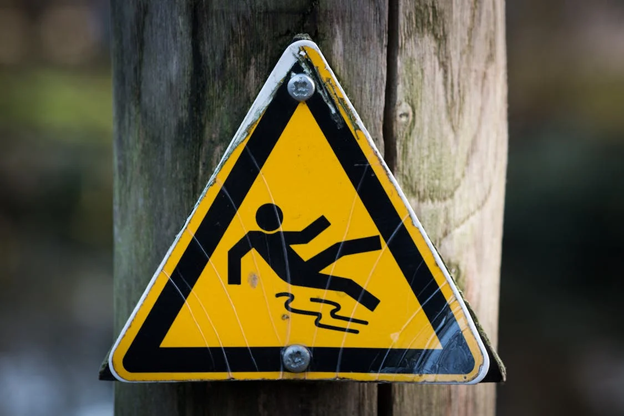Now Reading: How to File a Spinal Cord Injury Lawsuit
-
01
How to File a Spinal Cord Injury Lawsuit

How to File a Spinal Cord Injury Lawsuit
Spinal cord injuries can have devastating consequences, affecting an individual’s mobility, independence, and overall quality of life. In cases where a spinal cord injury is caused by the negligence or wrongful actions of another party, filing a lawsuit may be a viable option to seek compensation for medical expenses, lost wages, and pain and suffering. This article provides a comprehensive guide on how to file a spinal cord injury lawsuit, outlining the key steps and grounds for a spinal injury claim.
I. Understanding Spinal Cord Injuries and Liability
1.1 What is a Spinal Cord Injury?
- Definition and types of spinal cord injuries
- Common causes of spinal cord injuries
1.2 Establishing Liability
- Identifying potentially liable parties
- Proving negligence or wrongful conduct
- Finding the Right Attorney
2.1 Importance of Legal Representation
- The complexities of spinal cord injury cases
- Benefits of hiring an experienced attorney
2.2 Selecting an Attorney
- Researching and compiling a list of potential attorneys
- Evaluating an attorney’s expertise and track record
- Initial consultations and attorney-client agreements
III. Gathering Evidence and Building a Strong Case
3.1 Medical Documentation
- Collecting and organizing medical records
- Obtaining expert opinions and prognosis reports
3.2 Establishing Damages
- Calculating economic damages (medical expenses, lost wages, etc.)
- Documenting non-economic damages (pain, suffering, emotional distress)
3.3 Investigating the Incident
- Gathering witness statements and testimonies
- Collecting relevant photographs, videos, or other evidence
- Filing the Lawsuit and the Legal Process
4.1 Preparing the Complaint
- Drafting a complaint detailing the facts and legal basis for the claim
- Filing the complaint with the appropriate court
4.2 Serving the Defendant
- Ensuring proper service of the process
- Providing the defendant with notice of the lawsuit
4.3 The Discovery Phase
- Exchanging information and evidence with the defendant
- Depositions, interrogatories, and document requests
4.4 Negotiations and Settlement
- Exploring settlement negotiations and mediation
- Evaluating settlement offers and potential outcomes
4.5 Trial and Judgment
- Preparing for trial and presenting the case
- Obtaining a verdict or judgment
- Dealing with Insurance Companies
5.1 Communicating with Insurance Companies
- Notifying your insurance company about the incident
- Dealing with the opposing party’s insurance company
5.2 Understanding Insurance Coverage
- Reviewing your insurance policy for applicable coverage
- Evaluating the extent of coverage provided by the opposing party’s insurance
5.3 Negotiating a Settlement with Insurance Companies
- Presenting a strong case to maximize your settlement offer
- Consulting with your attorney to handle negotiations with insurance adjusters
- Time Limitations and Statute of Limitations
6.1 Understanding Time Limitations
- Familiarizing yourself with relevant deadlines and statutes of limitations
- Ensuring timely filing of the lawsuit to preserve your rights
6.2 Seeking Legal Advice Promptly
- Avoiding delays in consulting with an attorney
- Recognizing the importance of early legal intervention in preserving evidence and witnesses
6.3 Exceptions and Tolling of Limitations
- Identifying potential exceptions to statutes of limitations
- Understanding tolling provisions based on factors such as age or mental capacity
VII. Emotional Support and Rehabilitation
7.1 Emotional Support
- Seeking counseling or therapy to address emotional and psychological trauma
- Connecting with support groups or online communities for individuals with spinal cord injuries
7.2 Rehabilitation and Medical Treatment
- Engaging in a comprehensive rehabilitation program tailored to your specific needs
- Pursuing ongoing medical treatment and therapies to maximize recovery and quality of life
7.3 Importance of Documentation
- Keeping records of all medical treatments, rehabilitation sessions, and related expenses
- Demonstrating the impact of the injury and the ongoing need for support and treatment
Conclusion
Filing a spinal cord injury lawsuit is a complex process that requires a strategic approach and the guidance of a skilled attorney. By understanding the steps involved, gathering necessary evidence, and seeking the right legal representation, you can navigate the legal system with more confidence. Remember to promptly consult with an attorney, preserve all relevant documentation, and consider emotional support and rehabilitation as you pursue your legal claim. While the process may be challenging, obtaining fair compensation can help ease the financial burden and provide a sense of justice for the hardships caused by a spinal cord injury.

With a law degree under his belt, Mark Scott understood very early that law communication was a relatively neglected area. He decided to help people by “translating” the language and offering information and advice in a clear, useful, and actionable manner. For this reason, instead of finding him in court, you will most likely find his name online, where he is very active and thriving as a legal columnist. His part of making the world a better place is to make the law a less convoluted maze. He aims to make it easier for people to understand when and how to seek legal counsel, how to proceed in a significant number of legal matters, and to find the proper resources so they can stand up for their rights.










